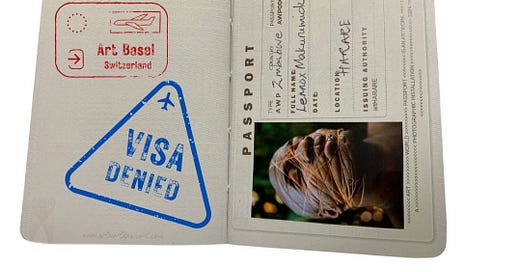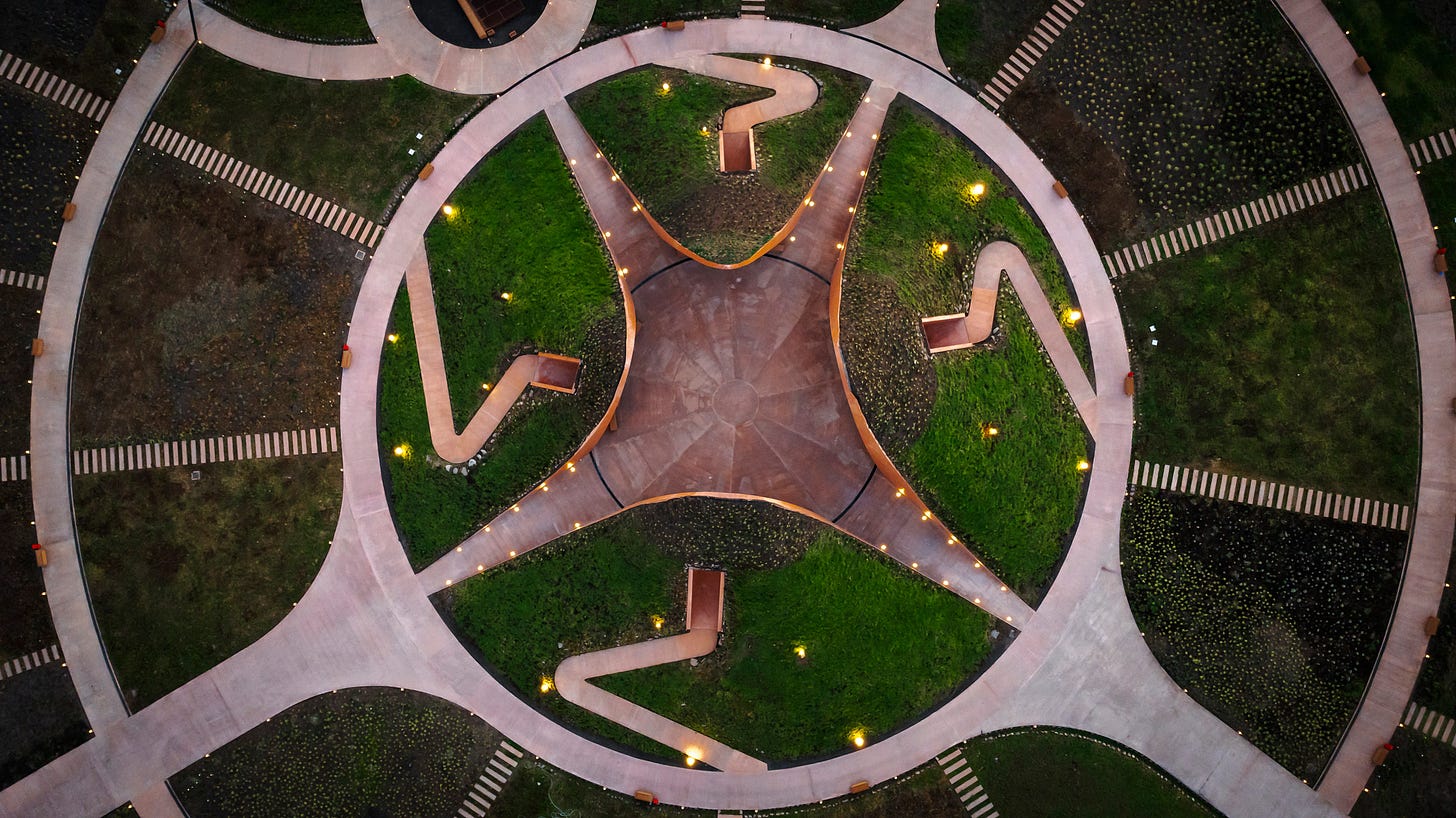Good morning from… can you guess where? (Answer at the bottom!)
Basel Rolls Out the Welcome Mat, But Forget Your Actual Passport
Basel, long the Swiss home of bank vaults and big-ticket art, just added a new shindig to its cultural calendar: Africa Basel, a debut fair for galleries championing art from Africa and its diaspora. Housed in a 14th-century ex-printing plant, the pop-up corrals 18 galleries (half of them straight from the continent).
Founder duo Benjamin Füglister (artist) and Sven Eisenhut-Hug (the Photo Basel guy) say it’s a truly global stage for voices often left off the playlist.
But the feel-good vibes hit a Swiss-border reality check: Zimbabwean artist Richard Mudariki (whose cheeky Art World Passport project literally sells blank “passports” for fairgoers to graffiti with doodles and selfies) was ready to debut the work in Europe. The Swiss embassy in Pretoria, alas, stamped “Denied” on his real passport because his hotel booking apparently looked “unreliable.”
So Mudariki’s physical seat at the Basel party is empty, but his project still made it in via video link. Still, his flight and visa fees remain non-refundable. The larger question he tosses back across the Alps: if even a 20-year career and two Swiss invitation letters can’t open the door, how “global” is the global art scene, really?
A Runway for Remembrance: Ethiopia’s ET-302 Memorial Park Lands with Purpose
Turns out not every flight path ends at an airport terminal… some become serene walkways of memory. Near Addis Ababa, Alebel Desta Consulting Architects has transformed the crash site of Ethiopian Airlines Flight 302 into a 30-acre circle of calm, complete with garden paths that radiate like spokes on a bicycle wheel – only instead of rushing commuters, you’ll find quiet reflection and the occasional butterfly.
At the centre sits a red-pigmented concrete mound sliced into four wedges, one for each continent the 157 victims once called home. Think of it as a global pie chart of loss, but far more dignified: plane-window-shaped plaques list every name, while small cubicles invite visitors to grieve in private. A single entry path traces the doomed jet’s final trajectory, an architectural reminder that, yes, design can make you swallow hard.
Continue east and a Corten-steel “Healing Monument” perforated with pinholes lets sunlight sprinkle the ground like confetti for the soul. Head west and you’ll hit an untouched Burial Ground, kept empty to honour what was lost. Swing further out and there’s an amphitheatre for larger ceremonies and a rock garden sourced from local stone.
In short, the ET-302 Memorial isn’t just a monument; it’s a carefully choreographed journey from heartbreak to healing, inviting visitors to walk the long circle between the two.
Benin Bronzes Head Home: Dutch Museum Says "This Doesn't Belong to Us"
In an act of historical cleanup, the Wereldmuseum in the Netherlands is carefully wrapping up 113 Benin Bronzes (looted over a century ago) and preparing them for a homecoming to Nigeria.
The bronzes, taken during a brutal 1897 British raid that razed Benin City and killed thousands, have long symbolized colonial theft dressed up as curatorial privilege. “These don’t belong here,” said museum director Marieke van Bommel, who oversaw the largest single repatriation of the artefacts to date.
And she’s not mincing words: “They were violently taken, so they need to go back.”
While Germany has begun similar returns, the British Museum remains obstinate, citing a 1963 law that conveniently blocks restitution.
The bronzes, once used to fund the expedition that stole them, are now priceless in cultural value… though the museum has arranged to keep four on loan to educate visitors on their violent extraction.
Next stop? Lagos by mid-June. And eventually, a new museum in Benin City, where the treasures will be handed to the Oba (the traditional ruler), not the Nigerian government.
Europe’s museums are finally facing the past. The question is, who’s next? British Museum, we’re looking at you…
Food for Thought
“The left hand learns before the right one is broken.”
— Angola Proverb
And the Answer is…
The photo is from Bangui, Central African Republic. You can also send in your own photos, alongside the location, and we’ll do our best to feature them.








Will you guys be reporting on the bronzes when they eventually return to Nigeria? I’d love to see the photos of Oba of Benin receiving them.